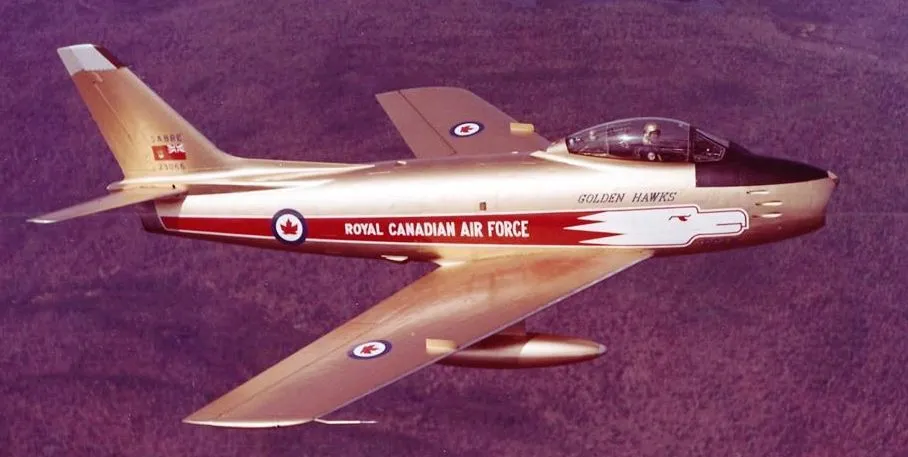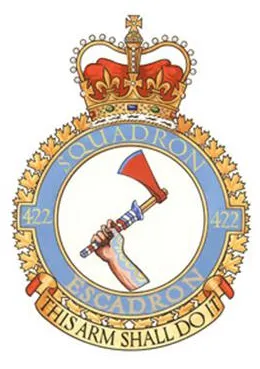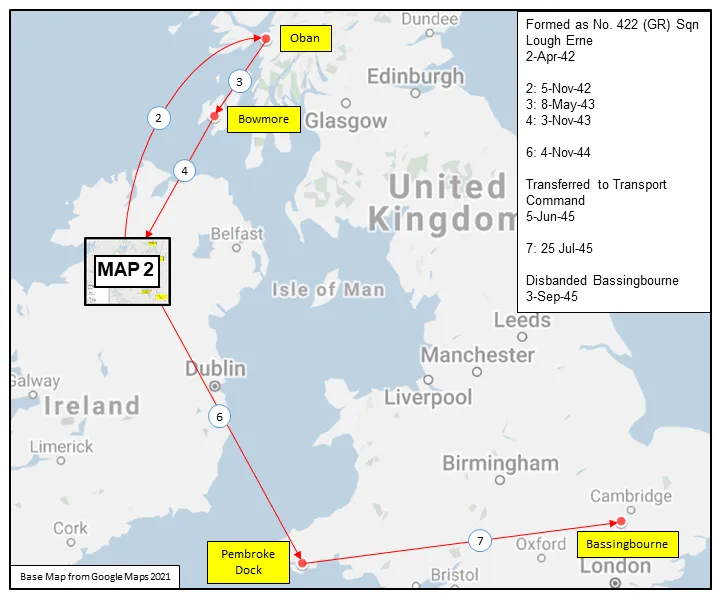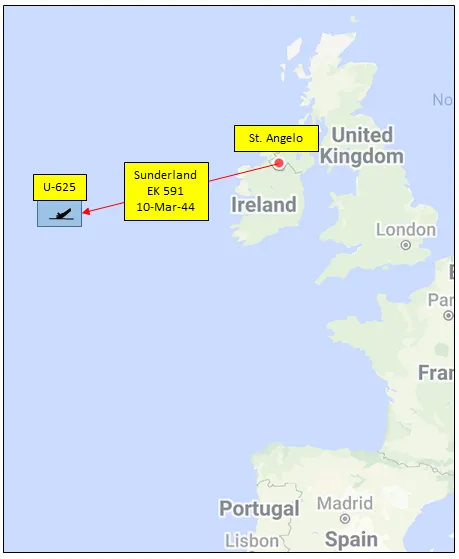North American Sabre F-86 CAC FJ-2 FJ-3 CA-27 CL-13

Canadair CL-13 Sabre Mk. 5 (Serial No. 23066), Golden Hawks
The North American F-86 Sabre, sometimes called the Sabrejet, is a transonic jet fighter aircraft. Produced by North American Aviation, the Sabre is best known as the United States' first swept-wing fighter that could counter the swept-wing Soviet MiG-15 in high-speed dogfights in the skies of the Korean War (1950"“1953), fighting some of the earliest jet-to-jet battles in history. Considered one of the best and most important fighter aircraft in that war, the F-86 is also rated highly in comparison with fighters of other eras. Although it was developed in the late 1940s and was outdated by the end of the 1950s, the Sabre proved versatile and adaptable and continued as a front-line fighter in numerous air forces.
Its success led to an extended production run of more than 7,800 aircraft between 1949 and 1956, in the United States, Japan, and Italy. In addition, 738 carrier-modified versions were purchased by the US Navy as FJ-2s and -3s. Variants were built in Canada and Australia. The Canadair Sabre added another 1,815 aircraft and the significantly redesigned CAC Sabre (sometimes known as the Avon Sabre or CAC CA-27), had a production run of 112. The Sabre is by far the most-produced Western jet fighter, with a total production of all variants at 9,860 units.
The fighter-bomber version (F-86H) could carry up to 2,000 lb (907 kg) of bombs, including an external fuel-type tank that could carry napalm. Unguided 2.75-inch (70-millimeter) rockets were used on some fighters on training missions, but 5-inch (127 mm) rockets were later carried on combat operations. The F-86 could also be fitted with a pair of external jettisonable jet fuel tanks (four on the F-86F beginning in 1953) that extended the range of the aircraft. Both the interceptor and fighter-bomber versions carried six 0.50 in (12.7 mm) M3 Browning machine guns with electrically-boosted feed in the nose (later versions of the F-86H carried four 20 mm (0.79 in) cannon instead of machine guns). Firing at a rate of 1,200 rounds per minute, the 0.50-inch guns were harmonized to converge at 1,000 ft (300 m) in front of the aircraft, using armor-piercing (AP) and armor-piercing incendiary (API) rounds, with one armor-piercing incendiary tracer (APIT) for every five AP or API rounds. The API rounds used during the Korean War contained magnesium, which were designed to ignite upon impact, but burned poorly above 35,000 ft (11,000 m) as oxygen levels were insufficient to sustain combustion at that height. Initial planes were fitted with the Mark 18 manual-ranging computing gun sight. The last 24 F-86A-5-Nas and F-86Es were equipped with the A-1CM gunsight-AN/APG-30 radar, which used radar to automatically compute a target's range, which later proved to be advantageous against MiG opponents over Korea. Wikipedia
 Wikipedia North American F-86 Sabre
Wikipedia North American F-86 Sabre
 YouTube F-86 Sabre Aerobatics - No Music! - Airshow London 2018
YouTube F-86 Sabre Aerobatics - No Music! - Airshow London 2018



CASPIR Aircraft Groups:
RCAF On Strength (1191), RCAF 400 Squadron (64), Canadian Aircraft Losses (104), Canadian Manufactured (1554)Sabre 6 23533
First flight 6 July 1955. Delivered to No. 1 Air Division. With 422 (F) Squadron RCAF Station Baden-Soellingen. Cat A crash 10 Dec 1956. Strike off. 1 fatal. Flight Lieutenant Frank Konrad.
1955-06-27 Taken on Strength 2022-02-07
1956-12-19 Struck off Strength 2022-02-07





 Canadian Virtual War Memorial
Canadian Virtual War Memorial Nemet-Ker, Hungary
Nemet-Ker, Hungary Harold A Skaarup Web Page
Harold A Skaarup Web Page



